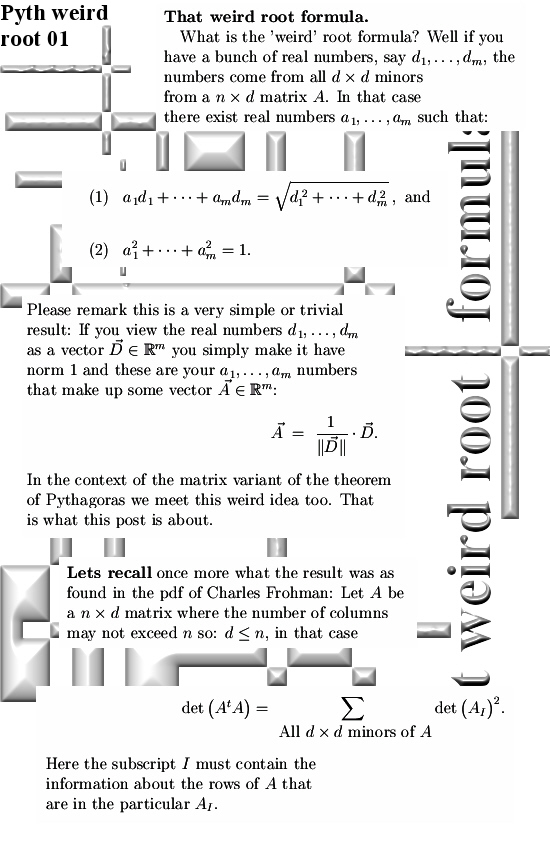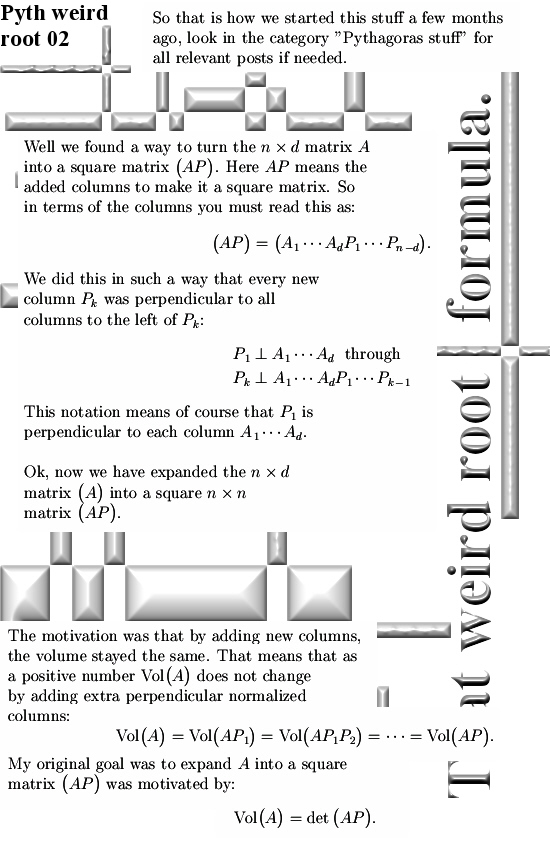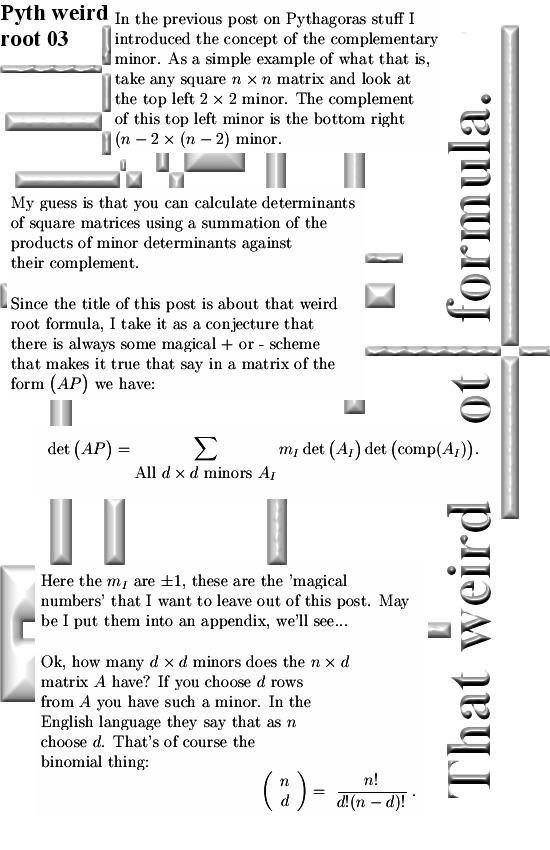It took an amazing amount of time to finish this post. When I started it you could still bike in the city with your shorts on. And now it is freezing cold at the start of winter. I posted over 220 posts on this website but I never experienced such a long lasting writers block on my behalf.
I think the start was much to impulsive, mostly I take more time before I pick a subject for the next post. This time I did not do that and soon I ran into writers regret: Why did I start this BS that is far to complicated to explain in a few lines of writing?
Even the beginning is dumb to do: It makes the reader think it is something solely on that space and it’s unit ball. And that dumb deed alone is a misrepresentation of what the weird root formula is about.
Anyway it is what it is and may be it is a good thing to show you that I can be very impulsive to. And in the science of math that is not a good thing.
Since it has been a while I posted the last post on the matrix version of our beloved theorem of Pythagoras, readers who are new must use the search function on the website or just look into the category ‘Pythagoras stuff’. The matrix version of the Pythagoras theorem is not that hard to formulate but hard to prove. It goes like this:
Given some n x d matrix A made up of d columns, if the d columns are linearly independent this defines or represents a d-dimensional parallelapiped. What can be said about the d-dimensional volume, or better the square of this volume?
It seems that the matrix A has lots of d x d minor matrices and if you take the determinant of these minors, square them they will add up to the desired square of the volume of A.
As you see: The result is not that hard to understand while our small human brain has trouble to cough up 20 proofs in 40 minutes.
The key idea of the weird root formula is that you can apply an alternative way of calculating determinants: Multiplying determinants of minors against determinant of their so called complement. So for the matrix A that should give it’s d-dimensional volume.
But if you expand the matrix A with an extra column perpendicular to all columns of A, say you get AP_1 and of course you normalize P_1 to length 1, you can repeat the whole thing on the expanded matrix. This goes on until the matrix A has been made a square matrix that I denote as AP.
In this post I use the notation (AP) for the square matrix so you must never view AP as the product of two matrices or so because that is not what it is…
This post if four pictures long but it has to be remarked I skipped how to find that +/- scheme you need for calculating determinants this way.




So after all this time this Pythagoras stuff is published. All in all it is a cute idea, that weird root formula can be applied not only to that starting matrix A but also on every extension with extra perpendicular columns.
End of this post.